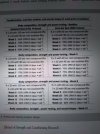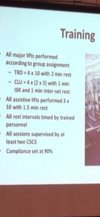Traditional Sets
Yes, it was performed with 4 sets of 10 continuous repetitions during each set.
Cluster Set Correction
Your oversimplified it.
They were performed for
"[4 × (2 × 5) with 1.5 min rest between sets 30 s rest between clusters] at 70 % 1RM..."
How To Read It
The above method "4 × (2 × 5)" is how it Cluster Sets are recorded.
It means a total of 4 sets with 2 Clusters Sets of 5 repetition were performed.
After one set of 5 repetitions, 30 seconds of rest was allowed before performing that second cluster of 5 repetitions.
I am sure you understood that. Other might not.
Training Percentages
Traditional Bodybuilding Training Percentages are between 60 to 80% of 1 Repetition Max.
Know Your Training Percentages
While training percentages can vary depending on how you're feeling on a given day, they can still be extremely useful.

thibarmy.com
70% of 1 Repetition Max.
"This is the low-end of the optimal range when it comes to stimulating hypertrophy."
80% of 1 Repetition Max.
"This is the high-end of the optimal range when it comes to stimulating hypertrophy."
Oliver's Custer Sets With 70% of 1 Repetition Max.
This is essentially the same that Traditional Bodybuilding Training Percentages recommend.
Joint Issues
Since the 1 Repetition Max Percentages are essentially the same for Traditional Bodybuilding Hypertrophy Training and Oliver's Cluster Hypertrophy Training Protocol there should not be any concerns with joint issues.
Performing Cluster Hypertrophy Sets
One of the primary caveats of Custer Hypertrophy is the each repetition in the cluster of repetition need to be performed explosively.
Explosive Repetitions innervate the Fast Type IIa and "Super" Fast Type IIb/x Muscle Fiber.
Fast Twitch Muscle Fiber is key for Maximum Strength, Power and Speed.
Also, Fast Twitch Muscle Fiber are a key factor in Muscle Hypertrophy.
Greater Force Production
Pushing or pulling a light to moderate load requires greater force production that moving the weight slower.
Research shows (A Comparison of Strength and Power Characteristics Between Power Lifters, Olympic Lifters, and Sprinters, Journal of Strength and Conditioning Research, 1999, 13(1), 58–66, McBride) that one of the keys to innervating (working/overloading) Fast Twitch Muscle Fiber is the explosiveness of the movement.
As per McBride, with heavy load the "Intent" need to be on pushing or pulling the weight as hard and fast a possible. Doing so, innervates the Fast Twitch Muscle Fiber.
"Compensatory Acceleration"
Dr Fred Hatfield's Compensatory Acceleration Protocol, prior to McBride research, was based on pushing or pulling heavy load with as much force (as quickly as possible) as a means of increasing Strength.
The Size Principle
The Muscle Fiber Firing Sequence in a movement regardless of how light or heavy. The firing sequence is...
Slow Twitch > Fast Twitch > "Super" Fast Twitch.
With that said, when a light to moderate load is performed explosively, the Fast and "Super" Fast Twitch Muscle Fiber are immediately innervated, turned on.
With light to moderate loads that are performed slower, the first few repetition of a set utilized the Slow Twitch Muscle Fiber before the Fast Twitch Muscle Fiber are called into play.
Bodybuilding Hypertrophy Training
As I noted in the previous post, the build up of Lactate triggers an anabolic response with higher repetition sets.
The downside is that the build up of Lactate produces a decrease in Maximum Strength, Power and Speed.
Thus, Hypertrophy is more effective at increasing muscle mass than clusters.
Cluster Hypertrophy Set Training
Oliver's research determined that athletes were able to maintain Maximum Strength and maintain/or increase Power and Speed while increasing muscle mass with Cluster Hypertrophy Set Training.
Cluster Sets...
1) "Allowed greater total volume load..."
2) "Greater average power..."
3) "Similar anabolic hormonal response..."
4) "Less metabolic stress..."
Summary
To reiterate, when Traditional Bodybuilding Hypertrophy Training is solely employed, it comes at the expense of the three type of Strength noted above.
Cluster Hypertrophy Set Training offers is...
1) An effective method that allow athletes to increase muscle mass without a lost of Strength.
2) Is an effective method for individuals on the Ketogenic Diet. It allows them increase muscle mass by training in the Phosphagen Energy System and avoid the Glycolytic Energy System.
Final Thought
With Cluster Hypertrophy Set Training, one of the primary issues is that too much focus is placed on performing a movement with a fairly heavy load. That was initially my case and is with others that I have worked with, as well.
While the load is important, what is even more important is the amount of Speed and Power of the repetition that each cluster is performed with.
At any point in an exercise or cluster of repetitions, if your Speed and/or Power decrease, the set or exercise needs to be terminated. Continuing means you are not longer working the Fast Twitch Muscle Fiber; after around 15 seconds they are not involved.






